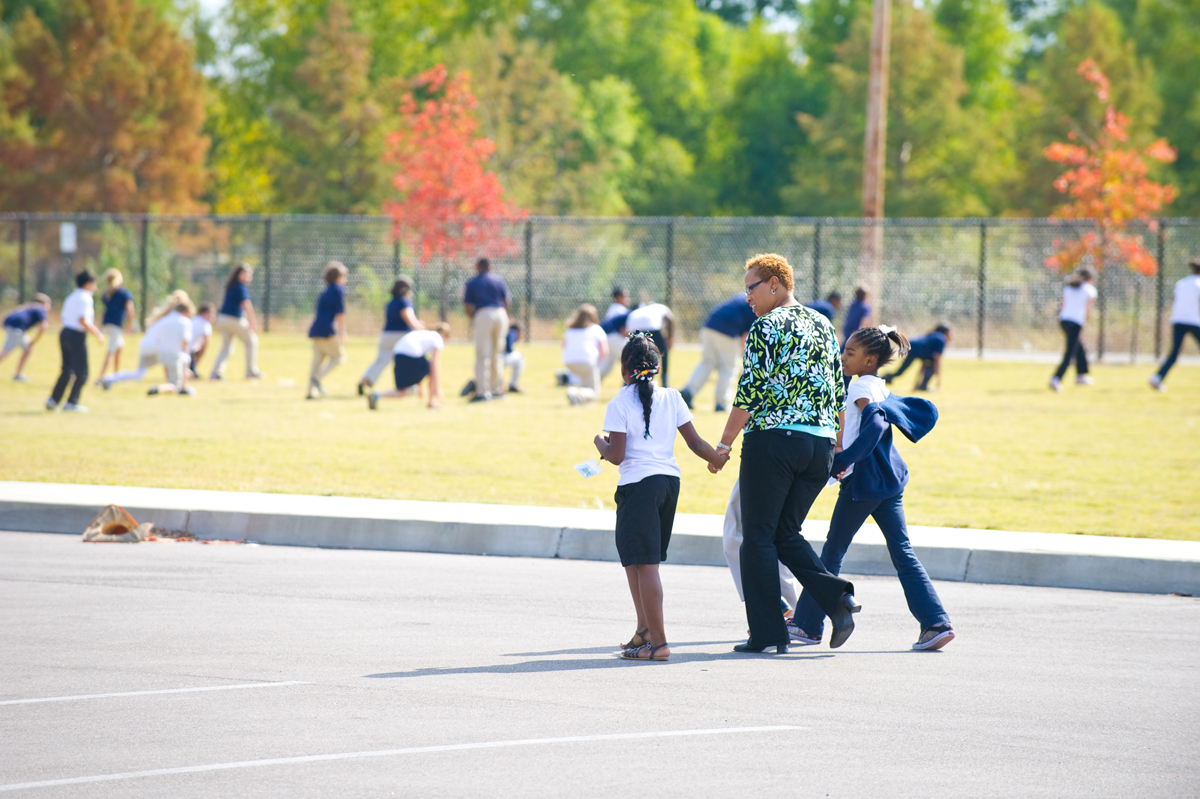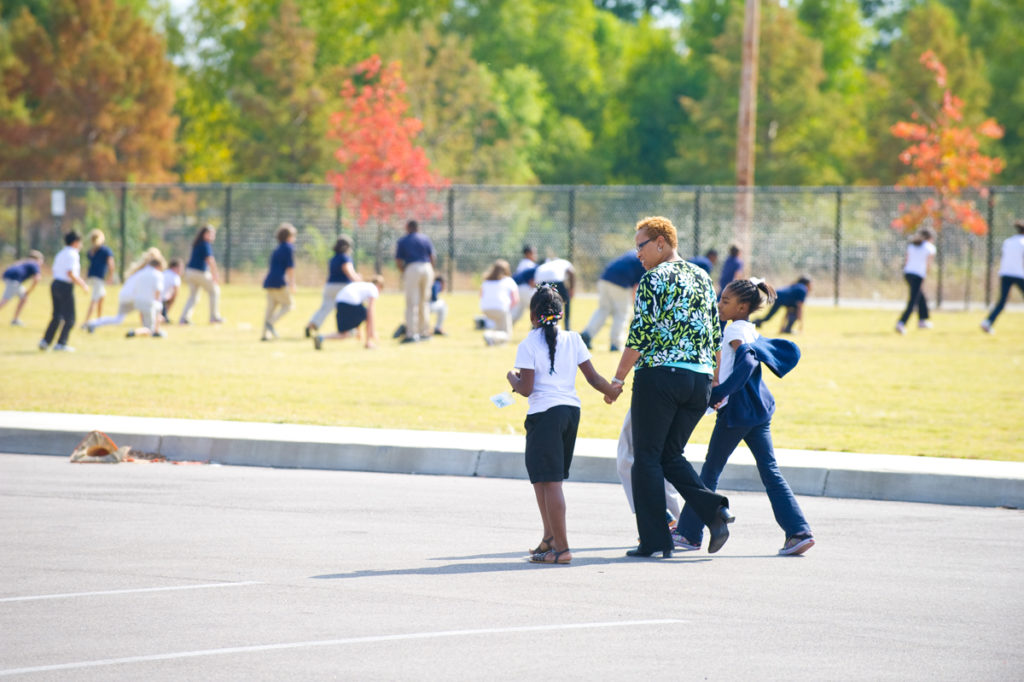Taking Positive Language Schoolwide

 Positive language is a powerful tool for building a calm, safe school climate. The words we use when we talk to students, the intention behind these words, and how we deliver them shape the way students see themselves and their school. When all school adults—not just classroom teachers—use positive language, children hear consistent messages about behavior expectations, and that consistency helps them feel safer and more independent at school. As a result, they’re more likely to meet established behavior expectations and less likely to make behavior mistakes in those trickier spots, like the cafeteria, the bus, and recess.
Positive language is a powerful tool for building a calm, safe school climate. The words we use when we talk to students, the intention behind these words, and how we deliver them shape the way students see themselves and their school. When all school adults—not just classroom teachers—use positive language, children hear consistent messages about behavior expectations, and that consistency helps them feel safer and more independent at school. As a result, they’re more likely to meet established behavior expectations and less likely to make behavior mistakes in those trickier spots, like the cafeteria, the bus, and recess.
What Is Positive Language?
In the Responsive Classroom approach, positive adult language is language that’s direct, brief, and focused clearly on specific actions that help children meet academic and behavior expectations and thrive as valued members of a learning community. The words are delivered in a tone that’s warm and friendly yet professional (no baby talk). The tone is also firm when needed but always kind and respectful (no sarcasm).
Two types of positive adult language are particularly beneficial for instructional assistants and non-classroom staff to learn:
- Reinforcing language names children’s strengths. By highlighting their skills, positive efforts and attitudes, and quality work, reinforcing language gives students a scaffold to stand on as they reach for the next higher level in their learning.
- Reminding language sets students up for success before a possibly challenging task or prompts them just as they begin to go off track so they can stay on task, organized, responsible, and safe.
This article focuses on these two types of language. For more information about them and other types of positive adult language, see The Power of Our Words: Teacher Language That Helps Children Learn and the many free resources in our online information library.
But how can school leaders include all staff in efforts to learn and use positive language? Here are some ideas to consider.
Provide training
When planning for staff development on using positive language, try to include all the adults in school so everyone hears the same message. As part of the training, use real scenarios that staff members may encounter. For example, cafeteria staff can brainstorm reminding language to use when students are waiting in the lunch line: “Who can remind us how the lunch line should sound?” Or they can practice reinforcing language to use when they see one student help another in the cafeteria: “Shareef, when you helped Amari clean up, you were following our rule of taking care of one another. I bet she really appreciated that.”
Instructional assistants often accompany students in the hallways, so they could brainstorm reminding language to use before students leave the classroom: “What will we look and sound like as we walk?” When instructional assistants notice students walking safely and quietly, they might use reinforcing language like this: “Your quiet voices help everyone continue with their learning!”
It’s highly effective to have staff practice crafting and delivering positive language right at the training. So that they feel more comfortable, consider having them partner with another staff member to do this rather than practicing in front of the whole group. Have each person practice using a respectful tone and neutral body language and getting feedback from their partner. Reassure everyone that although using this language with students may feel awkward at first, it will gradually become more natural.
Provide practice with sentence starters
During each staff training session, choose a focus for using positive language and have staff members generate sentence starters they can take with them and use as they work with students. At one school with 375 students in grades K–6 and a Family and Early Childhood Education Program, school leaders placed common sentence starters on a small card that could be inserted into the back of staff badges. On the card were phrases such as:
“I can see…”
“You remembered…”
“Show me…”
“Remind me…”
When students remembered to tag safely during recess, the recess aide could refer to his badge after students lined up and let them know what he noticed: “You remembered safe tagging. That helps recess feel fair and fun for everyone!”
Organize a study group around positive language
In addition to holding training sessions, offer articles, books, or videos as resources staff members can use to deepen their learning around positive language. Those interested can meet when and where they wish (perhaps online) to discuss key ideas and insights from the resources. This type of collaboration can keep learning going after formal staff trainings have concluded.
Rae Covey, principal of a school with 708 students in grades K–5, used this strategy to support cafeteria staff. Improving the climate in the cafeteria is a priority at this school, and as Ms. Covey explained, “All of the cafeteria staff read The Power of Our Words: Teacher Language That Helps Children Learn, and we discussed the content before the start of the school year.”
Use Morning Meeting and closing circle as practice opportunities
Learning a new skill takes time and plenty of practice, so look for ways to give staff extra opportunities to use positive language. Inviting non-classroom staff to join a classroom’s Morning Meeting or closing circle is one way to do that. For example, during a classroom’s closing circle, a bus driver might use reminding language like this: “You’ve been working on staying in your seats and using inside voices on the bus. That makes it safer for me to drive and feels calmer for everyone. I’m looking forward to seeing more of that later today.”
Or imagine custodians joining a Morning Meeting. They can reinforce specific things they’ve noticed students doing to take care of the school: “I noticed in the bathroom that all the used paper towels were thrown neatly into the trash can. When you’re careful like that, our school looks and feels great.”
The more opportunities staff have to use reminding and reinforcing language, the faster their skill will build, and the more impact their words will have on students.
Model the language yourself
Dr. Maureen Marshall, principal of a school that serves 902 students in grades K–6 as well as special needs preschoolers, spends time on the school bus. While riding along or monitoring bus loading, she models positive language.
“When the bus drivers see me there,” Dr. Marshall says, “and I’m helping them remind students of our bus behavior expectations, they see that the positive language works, and then I see them working harder to use it themselves.”
Recognize staff progress
Besides time and practice, learning something new takes risk. As school adults learn to use positive language, set time aside to reflect on growth and celebrate successes. Recognition of growth provides inspiration for even more growth. You might:
- Plan a staff meeting where all adults can celebrate their own growth and that of their colleagues. Consider inviting all of the adults to share positive language they’ve used with students.
- Craft a series of messages for staff (you might place a chart stand with the messages in their break room, for example) to highlight the growth you’ve observed in their use of positive language and how that language has impacted students.
- Leave a quick private note letting individual staff members know what you observed: “I heard you using reinforcing language with Amir. Because of what you said, he knows what he did well and what he needs to do to continue growing.”
What we pay attention to grows
Take the time to plant the seeds for positive language with staff, help them practice it, and then shine light on how students respond. The more you reinforce staff efforts, the more they’ll grow in their ability to use this powerful teaching tool—and the more students will benefit from hearing a clear, consistent, and positive message everywhere in school.
Tags: Professional Community, Professional Development, Redirecting Language, Reinforcing Language, Reminding Language, Staff Meetings